| Umělec magazine 2006/1 >> Franz Höfner and Harry Sachs: An art duo from Berlin | List of all editions. | ||||||||||||
|
|||||||||||||
Franz Höfner and Harry Sachs: An art duo from BerlinUmělec magazine 2006/101.01.2006 Spunk Seipel | profile | en cs |
|||||||||||||
|
A visitor to Metz’s faux-movement gallery last September and October must have been a bit surprised. The two German artists Franz Höfner and Harry Sachs constructed a new exhibition architecture in the gallery. You could walk through empty rooms, see wonderful, white, but bare walls. The classical exhibition pieces, pictures or sculptures were nowhere to be seen. OK, we are so used to many things in art that many thought that this is just another more or less witty critique of museums, or an ideal notion how a museum with smaller and bigger rooms should look according to the two artists. The “white cube” itself as an inexhaustible theme. That was nothing new, as long as we know the various ideal museum models of many artists, whose number has recently been increasing.
Those, who managed to adapt in the end and cross over the “please don’t touch” line in the context of the museum, could discover - behind the neutral door, which belongs to the technical rooms of the museum, hidden between the walls and the exhibition architecture - a constructed gallery owner’s apartment. Within the claustrophobically narrow walls was everything such an apartment needs: a kitchen, a bathroom, a bedroom and a living room, but also a gym and a winter garden. Of course most of these rooms were very different from what we know in usual apartments, because of the narrow space. A children’s room had a three-level bunk bed, the living room was more or less a narrow corridor while the toilet reminded us of the additionally built-in toilets in the old German building, only it was even narrower. Despite the narrow dimensions it was possible to walk in the space, the visitor had to face various questions – e.g. to think about the usual relationship of a person and a space, about the functionality of our apartments, about our expectations concerning housing itself. In France, the country where modern architecture has tried the most radical experiments in housing (just rememeber Le Corbusier, who in social housing construction eliminated corridors wider than 80cm as a pure waste of space), this point of view certainly has an explosive nature. Franz Höfner and Harry Sachs have questioned in a very simple and funny way a few rules of art: what is actually happening behind the visible backdrops of the exhibition? And they dared to answer this in their installation in a new and humorous way. Overall the work of Franz Höfner (1970 - ) and Harry Sachs (1974 - ), who met at Bauhaus University in Weimar and since 1998 have been building their large-space installations, is full of irony. Its substance always creates a critical contradiction with certain social phenomena. At the beginning of their cooperation there was an illusion of fitness which they created with the help of the “Powerburning” program. Or their desire to travel which by founding their own travel agency in summer 2000 they wanted to respond to new forms of travel culture. Later cars and architecture were at the forefront of their creative work. But still both artists – despite their repetition of similar motifs - let themselves be inspired by new and more surprising ideas which were always grounded on observation of the social and cultural influence of the environment. To exhibit in a gallery is still something other than setting up an installation in Halle-Neustadt’s abandoned prefabricated building. Here one has to react artistically, one cannot organize twisted social-theoretical research, what is necessary is a social and aesthetic sensibility, which both of them have. Up until the collapse of the communist system, thousands of workers who worked in the nearby factories of Bitterfeld and Leuna lived in Halle-Neustadt. When the factories were closed, people left the typical East German estates of prefabricated apartment buildings, which today are synonymous with the emptying of Eastern Germany’s cities. Whole rows of apartment blocks are empty and dilapidated. Höfner and Sachs took the opportunity and joined three apartments on the top floors of one of the houses with the help of openings in the walls and they used objects left by ex-tenants from two hundred abandoned apartments in the block – so they created a claustrophobic labyrinth with all the furnishings of a normal apartment. Single rooms were joined with “mouse tunnels”, their walls were built from parts of found furniture and so often you could find a kitchen door is an entry into another new corridor. Höfner and Sachs built a real labyrinth of experiences, which the ex-residents and neighbors visited with enthusiasm. The installation, like all of the work of the two artists, showed the sometimes barely restrained fun the artists had building and reinterpreting with the found materials. Of the installation, just like their other inventive works, there only remained a few documentary pictures and a video, which itself can be considered an art work. In the style of a video people crawl and climb through the corridors, and one has the feeling of people’s degradation in their own surroundings, where they are only an executor of certain functions, not a real master of their environment. Although the video shows a completely newly created world of housing, it also expresses a criticism of the constrictions of normal housing. The dream of one’s own residence can become a nightmare. But Höfner and Sachs don’t only make the visitors crawl through narrow corridors to enjoy their installations. In Freiburg im Breisgau in September 2005 they built a whole model of the city in the cellar of an old warehouse from material found there, and they built a children’s train to go through it, which could also take adults visitors on a ride. Höfner and Sachs escalated their criticism of architecture to the utmost, the whole city becomes the motif of their work, and at the same time they remind us of the city models we can find covered in dust in the attics or cellars of many national museums. Can such an exhibition draw people in? Probably yes, as in Freiburg there were lines of visitors who wanted to get on the train and could find again the sights of their city built from scrap. A photo of the journey was included. But maybe in peaceful Freiburg they are used to events and sensational tourism – one of the most visited sights is the Europarc, a German Disneyland. Both artists had already dealt with the theme of the bizarre development of tourism at the Venice Biennale in 2003. They tried to make visitors of St. Mark’s Cathedral stand in a line in the form of a spiral. The spiral, which recalled Robert Smithon’s famous stone Spiral Jetty from 1970 in Utah’s Great Salt Lake, suddenly was no longer a static thing, existing forever, but a moving, constantly changing sculpture of a mass of people who actually came to see a piece of art from another time. A bridging of art history linked with the question of the manipulability of people. Another motif in Venice is traffic again, everyday and romantic tourism. The first is ruled by motorboats and contributes to the ruining of the city, the other by the technically antiquated gondolas, which block deliveries. Höfner and Sachs comment on this long-standing debate about the solution of the traffic problems of the city suffocating under the torrents of tourists by turning a car upside down, putting it in the canal, adding an outboard motor to it and cruising the canal until they collide with a gondola. The result is a video in which one can see only the dirty, gray water in front of the windshield. Only now and then algae appears on the windshield wiper, and one becomes uneasy, as the water level is disturbingly on the lower part of the windshield instead of the upper as we would expect. Sometimes you can see a piece of the sky, a boat goes round with a lifted prow, and in a few seconds of the video one can recognize a skyline of Venice. The main feature of Venice, the canals, thus become a scene from a nightmare, because the video gives us the feeling that we are drowning but still we have to laugh at image of the astonished faces of the gondoliers and tourists who can see this upturned car in the canal. In Hamburg Franz Höfner and Harry Sachs played with irritations and they stir dissatisfaction in a few co-citizens. Above the entry into the port city they installed a colony of caravans which illogically stood on the flat roof of the customs clearance house, which is actually not a good place for Dutch tourists to camp. But because there was some washing hung out to dry on a clothesline, lights going on and off and a TV on, only a few neighbors didn’t find out, that clever tourists or some other itinerants had found their ideal place here. The xenophobia, the fear of unwanted guests, alarmed the authorities. The police couldn’t do anything, Franz Höfner and Harry Sachs found a legally non-regulated space in the middle of Hamburg, in which no one could intervene with the installation. Not even the almighty “Springerpresse” (belonging to Axel Springer) succeeded with its protests. So Hamburg’s citizens were left with no other choice than to do what all Höfner and Sachs’ other visitors do: to wonder, watch and investigate the exhibitions, to climb them, crawl through them, or just look upwards.
01.01.2006
Recommended articles
|
|||||||||||||
|
04.02.2020 10:17
Letošní 50. ročník Art Basel přilákal celkem 93 000 návštěvníků a sběratelů z 80 zemí světa. 290 prémiových galerií představilo umělecká díla od počátku 20. století až po současnost. Hlavní sektor přehlídky, tradičně v prvním patře výstavního prostoru, představil 232 předních galerií z celého světa nabízející umění nejvyšší kvality. Veletrh ukázal vzestupný trend prodeje prostřednictvím galerií jak soukromým sbírkám, tak i institucím. Kromě hlavního veletrhu stály za návštěvu i ty přidružené: Volta, Liste a Photo Basel, k tomu doprovodné programy a výstavy v místních institucích, které kvalitou daleko přesahují hranice města tj. Kunsthalle Basel, Kunstmuseum, Tinguely muzeum nebo Fondation Beyeler.
|







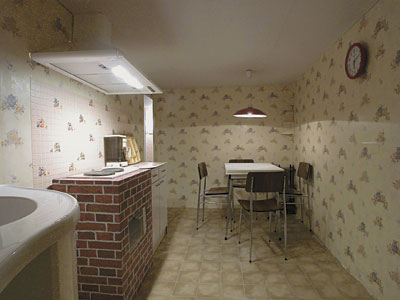




















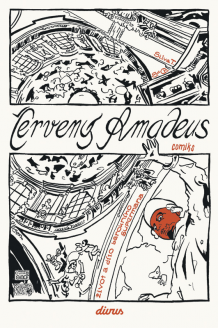




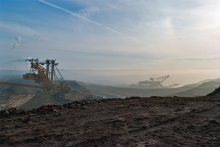
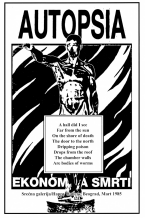
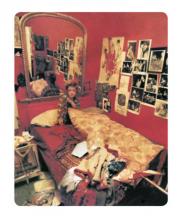
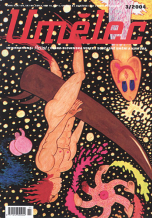


 New book by I.M.Jirous in English at our online bookshop.
New book by I.M.Jirous in English at our online bookshop.
Comments
There are currently no comments.Add new comment